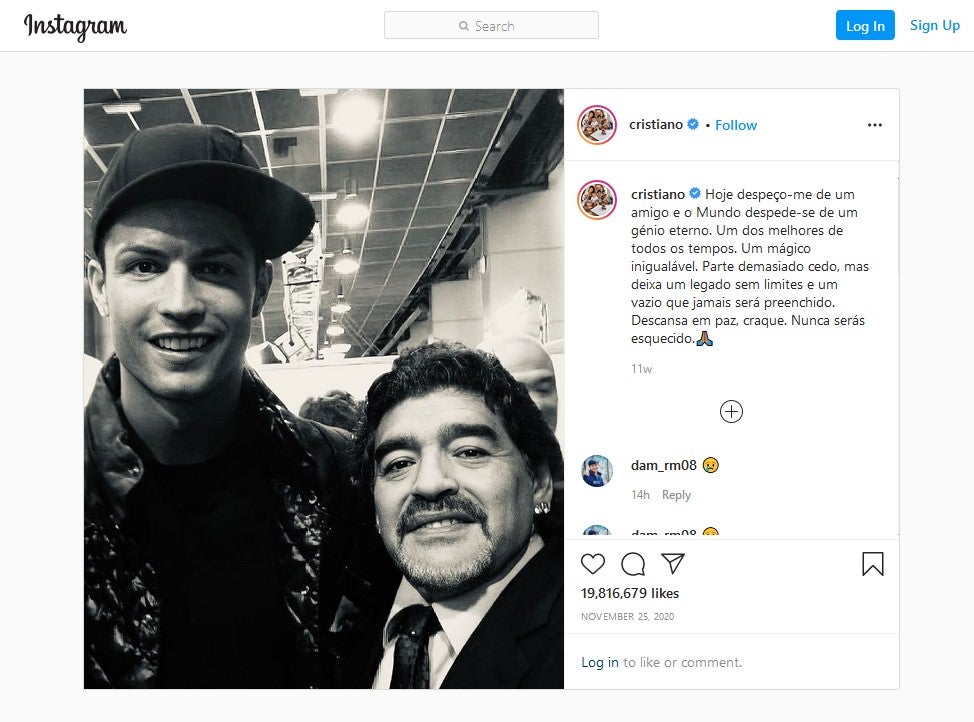Original Artwork by Joan Alturo
CHEAT SHEET
The power of influence. An influencer is generally someone with the power to affect the buying habits of others through their large public following on social media — often being paid to do so.
Contractor v. employee. Under existing regulations, an influencer contracted by a company to promote a brand or product would be classified as a gig worker, but this is subject to change.
Consumer protection. The FTC and other regulatory bodies have established rules and guidelines to suppress deceptive advertising, placing the responsibility of disclosure on both the company and influencer.
Formal processes. Companies contracting influencers should establish influencer endorsement policies and use formal contracts.
Nathan Apodaca made it to the Big Game. Yep, the Super Bowl. Apodaca, also known to his TikTok fans as @420Doggface208, teamed up with Ocean Spray to launch their #DoggfaceDanceVibes campaign in the lead up to the game.
This is the first time the 91-year-old brand has officially partnered with an influencer. Some might say Ocean Spray really did not have a choice. Last October, Apodaca’s TikTok video went viral, generating a ton of publicity for the brand. His laid-back longboarding episode while drinking Ocean Spray and lip-syncing to Fleetwood Mac’s “Dreams” was just irrepressible. In the end, his boarding earned him a cranberry-red Nissan truck filled with juice, funds for his honeymoon, and now a “trip” to the Super Bowl.
Since any in-house counsel could be caught off-guard by a viral post where the company’s product is featured, it is worth taking a deeper dive into the legal issues surrounding this new type of marketing that is exploding globally. That way, you are prepared for the next viral video.
What is an influencer, really?
It’s a question a lot of people are asking today. Superficially, it is a person (or pet) who wields influence. While many may fit this description, in the days of the internet, the term has taken on a more nuanced meaning and created an ethos known as the “influencer culture.”
The general populous defines an influencer as someone (or something) with the power to affect the buying habits of others. As in-house counsel, we look to the courts for a more definitive definition. Recent case law, like Jianming Jyu v. Ruhn Holdings Ltd., defines influencers as “individuals who create content on social media platforms such as Facebook, YouTube, TikTok, and Instagram with the hope of garnering a large public following [and] who are paid to promote, market, and advertise products and services to their fans and followers.” Note that for purposes of disclosure, the US Federal Trade Commission (FTC) does not limit the definition of payment for influencers to monetary compensation but “anything of value,” including free or discounted products.
Note that for purposes of disclosure, the US Federal Trade Commission (FTC) does not limit the definition of payment for influencers to monetary compensation but “anything of value,” including free or discounted products.
Furthermore, an “influencer” is an individual with the power to affect the purchasing decisions of others due to their position, authority, fame, expertise, knowledge, and/or the individual’s authentic relationship with their audience or followers.
Modern influencer marketing seeks to use influencers because they are relatable and can explain to the market audience how and why they incorporate a particular product in their everyday life. Influencer marketing is a form of marketing where a seller leverages the popularity and credibility of particular individuals to market specific products in a testimonial manner.
The goal of influencer marketing is to focus product promotional efforts on specific target groups rather than the entire product target market. This marketing model relies on a broad range of individuals who wield measurable influence on various social media platforms, referred to as “influencers.”
Achieving influencer status
For a brand to consider someone an influencer, the individual needs enough followers and audience engagement to show that working with them will have some sort of tangible impact on their business.
Influencers shape the attitudes of audiences through social media channels. Celebrities, including movie stars, athletes, and musicians are inherently social media influencers. For example, Portuguese soccer player Cristiano Ronaldo and pop singers Justin Bieber, Taylor Swift, and Ariana Grande are among the top 10 influencers of 2020. Time also named singer and actress Selena Gomez as one of the 100 Most Influential People of 2020.
Influencer types
Nine of the top 10 social media influencers in 2020 fall into one or more of these four distinct categories: (1) mega-influencers; (2) macro-influencers; (3) micro-influencers; (4) nano-influencers.
Levels of influence are generally defined by the number of people who follow the influencer on various social media platforms. Mega-influencers are generally celebrities or individuals who have gained vast followings through their online and social media activities and garnered over one million followers on at least one social media platform.
Gayle Eyal, CEO and founder of influence marketing platform HYPR Brands, further defined mega-influencers as being “more famous than influential. They aren’t necessarily subject matter experts, but they definitely provide a lot of reach in one hit.” Every influencer needs a target audience and loyal following, which they build through online content creation.

While there is no precise number of followers at each influencer level, macro-influencers are generally up-and-coming celebrities and individuals who have achieved a significant following from their social media activities, usually in the range of 40,000 to one million social media followers. Tyler Blevins, more commonly known by his online alias “Ninja,” is a professional video game streamer who rose to fame by competitively playing Fortnite, an online action game, which moved him from micro to macro influencer status within one year. His net worth is estimated at around US$25 million.
Some industry experts consider micro or nano influencers as better choices for advertisers. Instagram defines a micro-influencer as an individual with between 2,000 to 50,000 followers. Micro-influencers are known for their knowledge about some specialist niche and have a sizeable social media following amongst devotees of that niche. Micro-influencers are often less costly to engage, and arguably achieve better results for the brands that engage them due to their niche following.
The authors of this article interviewed Brad Shear, an in-house influencer with over a million followers on TikTok, about how he accidentally became a viral star by posting 15-second legal tips for his young audience.
When utilizing influencers to promote their regional events on social media platforms, Events DC, the premier host of conventions, sports, entertainment, and cultural events in Washington, DC, often engages micro-influencers. Their regional reach allows Events DC to indirectly penetrate the target audience.
One of their many successes was the FIBA AmeriCup 2021 Qualifiers between USA Basketball and the Puerto Rico National Team, which took place at the Entertainment and Sports Arena in Washington, DC in February 2020. Events DC engaged a social media influencer with a strong reach within the Puerto Rican community and collaborated with local Hispanic radio partners and Puerto Rican restaurants, among others, to promote the event to a population demographic they felt they did not have sufficient hold.
Events DC’s event marketing strategy proved successful, with the game selling out — a prime example of an entity effectively incorporating micro-influencers as a component of their overall event marketing strategy.
Lastly, the final category, nano-influencers, are individuals who are experts in a highly specialized field. They generally have between 1,000 and 5,000 followers. Like micro-influencers, nano-influencers also have a strong connection with their audience. Nano-influencers are more likely to respond to a follower’s comments in a more meaningful fashion to build a loyal following than the other categories.
Gig worker employment classification
After determining the influencer’s category, the next step is figuring out their employment designation. As the use of influencers has become more prevalent so too has the question of their employment designation and what, if any, policies govern the unique influencer-company relationship. Are these individuals categorized as independent contractors, employees, or does it depend?
A traditional view of the influencer-company relationship would likely lead one to classify an influencer as an independent contractor, applying the US Internal Revenue Service’s behavioral rule: Is the work being performed outside of employer control? However, California has passed new legislation addressing “gig-economy workers'' that dramatically changes the rules employers must use to determine whether workers are employees or independent contractors. This could potentially have a large impact on the influencer industry.
In 2020, California law (AB5) became effective, establishing a new standard by which employers would categorize workers. The new law focuses on the “in fact” relationship between a company and a gig-worker. Rather than accept the boilerplate contract language that states these individuals are independent contractors, the law introduces an “ABC” test to determine if these workers are entitled to the same protections as traditional employees, including minimum wage, overtime pay, unemployment insurance, workers’ compensation insurance, paid family leave, and more.
Under the ABC test, a worker is an independent contractor only if he or she:
- Is free from the control and direction of the hiring entity in connection with the performance of the work, both under the contract for the performance of the work and in fact, and
- Performs work that is outside the usual course of the hiring entity’s business, and
- Is customarily engaged in an independently established trade, occupation, or business of the same nature as that involved in the work performed.
If the worker does not meet each element of the test, the law requires them to be classified as an employee with a few exceptions. One of those express exemptions is for “professional services,” which includes marketing professionals, graphic designers, fine artists, photographers, and freelance writers, which arguably captures the role of an influencer. And thus an influencer would still be classified as an independent contractor, for now.
The California law, however, is a clear sign of the times changing. The prevalence of gig workers is forcing states and countries to reexamine how workers are classified and perhaps modernize long-standing norms. New York and other states are looking to adopt their version of AB5 as the rise of gig-workers increases and is further compounded by individuals taking on additional/different roles due to industry fallout from COVID-19.
The United States is not the only country facing issues related to the classification of gig-economy workers, which influencers undoubtedly are. In Uber BV v. Aslam, a UK case, the Court of Appeal upheld a ruling that two Uber drivers were “workers” within the definition of the Employment Rights Act 1996, the National Minimum Wage Act 1998, and the Working Time Regulations 1998, and as such, the drivers were entitled to the minimum wage, paid leave, and other legal protections.
This case has the potential to be a landmark ruling in the United Kingdom that would drastically shift not only the way Uber and other ride-share companies operate but gig-economy workers in all facets including social media influencers.
Protecting the consumer
Another developing area of legal concern surrounding influencers is the focus on transparency when it comes to advertisements and marketing rollouts. When hired for marketing purposes, the influencer’s job is to blog, post, photograph, or otherwise promote a company’s products or services to their followers. Thus, it is no surprise that the law treats social media marketing as a subdivision of traditional marketing practices.
As in all advertising, Section 5 of the FTC Act was created to protect consumers from deceptive advertising by prohibiting “unfair or deceptive acts or practices in or affecting commerce.” An unfair practice is conduct that causes or has the potential to cause misinformed purchasing decisions to consumers. Deceptive practices are those which involve a material representation, omission, or practice that are likely to mislead a consumer into making a purchasing decision that they would not have made absent the deceptive conduct.
In order to apply the FTC rules properly in the influencer space, the FTC created an endorsement guide to address the many concerns that have arisen in the space over the last couple of decades. Specifically, the FTC guidelines make clear that the responsibility of monitoring social media product promotions for deceptive acts falls on both the brand and the influencer promoting their product. If a brand provides some form of compensation to an influencer, the brand is required to disclose that the influencer was paid to review the product in the influencer’s post.
Specifically, the FTC guidelines make clear that the responsibility of monitoring social media product promotions for deceptive acts falls on both the brand and the influencer promoting their product.
Compliance with this rule also means the brand is required, under the guidelines, to implement reasonable programs to train and monitor members of their network. An FTC compliance training should be included in the onboarding process for employees, influencers, and vendors, such as social media endorsement agencies.
It is also wise to offer periodic refresher trainings to remind individuals about their compliance obligations, as well as appoint a designated individual within the company to monitor the latest regulatory developments in the influencer industry.
When are disclosures required?
Under the FTC guidelines, an influencer is required to clearly and conspicuously disclose their “material connection” with the brand. A material connection is one that “might affect the weight or credibility that consumers give the endorsement.”
Material connections include any financial, employment, personal, or family relationship with a brand. If there is any question as to whether a material connection exists between the influencer and the brand, the FTC recommends that the influencer err on the side of disclosure.
The disclosure requirement applies if the influencer received anything of value, from monetary compensation to free or discounted products, and more.
Evaluating the effectiveness of disclosures
What exactly must an influencer disclose? While the FTC has not established any particular words or phrases that an influencer must include in their disclosure, the disclosure must be simple and clear enough for the audience to understand that the influencer was compensated or promised compensation in exchange for the endorsement or that the endorser knew or had reason to know that they would receive a benefit in exchange for a positive endorsement.
An influencer’s disclosure is only effective when seen and understood by the viewer and should therefore be placed directly on the influencer’s endorsement message. The FTC recommends against the use of terms, abbreviations, or hashtags that are vague, ambiguous, confusing, or might otherwise mislead the viewer as to the extent of the influencer’s connection with the brand they are promoting.
The FTC cautions against relying on a social media platform's built-in disclosure tool to satisfy the endorsement disclosure requirements, as the burden of proving adequate disclosure lies with the influencer and the brand, not the social media platform.
The FTC suggests that the method of disclosure take into account the particular type of media that the influencer uses to engage their audience. For example, if the influencer is promoting a brand by video, the FTC recommends that the disclosure prominently appear in the video itself, to allow the viewer sufficient time to notice and read the disclosure.
If the influencer uses a photo to promote a brand on a social media platform, the influencer should superimpose the disclosure over the photo so that it is obviously seen by the viewer of the post. The FTC cautions against relying on a social media platform's built-in disclosure tool to satisfy the endorsement disclosure requirements, as the burden of proving adequate disclosure lies with the influencer and the brand, not the social media platform.
CMA guidelines
Similar to the FTC guidelines that govern influencer and social media posts in the United States, the Competition and Markets Authority (CMA) provides comparable guidelines for the United Kingdom. The CMA requires that influencers be clear about the relationship with brands and not be misleading in their promotion. In a 16-page document entitled “Influencers’ guide to making clear that ads are ads,” the CMA, along with the Advertising Standards Authority (ASA), and Committee of Advertising Practice (CAP) set forth the standards and requirements for influencer advertising on social media, which focus on consumer protection and prohibiting unfair and deceptive commercial practices.
Platform-specific rules
An additional overlay of rules exists for influencers in the form of platform-specific policies as well. Platforms such as YouTube, Facebook, and Twitter each have unique “branded content” policies. Facebook defines branded content as “a creator or publisher's content that features or is influenced by a business partner for an exchange of value.”
The prevalence of such influencer arrangements has prompted Facebook and its platforms like Instagram to implement clear “paid partnership” functions within the app that influencers are instructed to use when promoting a brand. The function provides clear language that the post is a paid partnership, and both the influencer and brand (which must be tagged) are responsible for ensuring the post complies with applicable rules and regulations.
By using this “paid partnership” function an influencer satisfies the applicable FTC or CMA guidelines. These platform-specific policies were created to better enforce the FTC/CMA guidelines and crack down on “hidden” influencer posts.
Implementing an influencer policy
With all these requirements, it is highly recommended corporations implement a clear and effective Influencer Endorsement Policy Guideline. A robust policy serves the dual purpose of driving the corporation to establish guidelines and expectations when engaging influencers to promote their brand on social media while simultaneously advising influencers of the corporation’s expectations with regard to the promotion of the corporate brand, services, or products to their followers.
Top 10 points to include in a policy
When developing an influencer policy, particularly in the sports and entertainment industry, corporations should be sure to incorporate the following 10 points within their policy:
1. An overview of the relevant rules and regulations for influencers, including a section dedicated to FTC endorsement disclosure obligations.
2. Influencers' responsibility to clearly and conspicuously disclose their commercial relationship with the company when promoting the company’s goods or services on social media platforms.
3. Instruct influencers on what they can and can’t say about the product or service that they are endorsing and their obligation against deceptive representations.
4. Examples, including visuals, imagery-based and detailed description of a proper social media endorsement disclosure based on the post-type.
5. Guidelines for an influencer’s responsible use of social media when promoting the company’s goods or services, and any approval process.
6. How the company will monitor the influencer’s compliance with the influencer endorsement policy.
7. Reference related company policies, which also govern the employee’s obligations regarding use of social media platforms.
8. Repercussions for the influencer’s violation of the company’s influencer endorsement policy.
9. Acknowledgement of receipt, review, and understanding of the policy.
10. Confidentiality/contractor status.
Monitoring compliance
The FTC also requires brands to establish a “reasonable program” to monitor an influencer’s efforts to promote their brand on social media. The brand’s program should advise influencers what they can (and can’t) say about the products and instruct influencers on their responsibilities for disclosing their connections to the brand.
Apart from implementing an effective internal social media influencer endorsement policy and a social media influencer contract that details an influencer’s compliance requirements, brands should consider developing and distributing an influencer code of conduct that informs influencers with material connections to the brand about their social media endorsement obligations and how the obligations should be satisfied.
Is your company thinking about contracting with a social media influencer?
Read the "20 Terms and Conditions to Include in an Influencer Agreement" that the authors of this article recommend.
Brands should also evaluate the level of control they want to maintain over the influencer’s posts prior to the post appearing on a social media platform to monitor disclosure compliance. Brands may benefit from utilizing a post pre-approval system, where the brand conducts an internal review of the intended post prior to the post appearing on social media.
Several companies now offer software that can flag potentially non-compliant posts before they are posted on social media platforms. The FTC also recommends that brands periodically search social media platforms to confirm what their influencers are saying and promptly address any questionable or potentially deceptive practices discovered during the social media post review.
With the rise of brand reliance on product and service promotion through social media channels and a rise in global regulation, brands and their influencers should ensure that they implement adequate social media endorsement disclosure precautions and clearly convey their disclosure expectations to the influencers who promote their brand.
Outlook
Influencer marketing has grown into a multibillion-dollar industry. In the beginning, it was just about sending an influencer a small gift in exchange for them considering a casual mention in their next post. But, today, the power has shifted to the influencers. As they command more money, it is imperative that companies demand more compliance.






